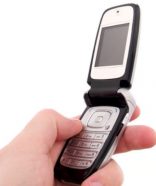Cell phone tattlers
DNA evidence left on cell phones can help detectives solve crimes.
By Emily Sohn
Your cell phone holds secrets about you. Besides the names and numbers that you’ve programmed into it, traces of your DNA linger on the device, according to a new study.
DNA is genetic material that appears in every cell. Like your fingerprint, your DNA is unique to you—unless you have an identical twin. Scientists today routinely analyze DNA in blood, saliva, or hair left behind at the scene of a crime. The results often help detectives identify criminals and their victims.
 |
|
Your cell phone can reveal more about you than you might think. |
| iStockphoto |
Meghan J. McFadden, a molecular biologist at McMaster University in Hamilton, Ontario, heard about a crime in which the suspect bled onto a cell phone and later dropped the device. This made her wonder whether traces of DNA lingered on cell phones—even when no blood was involved.
To find out, she and a colleague collected flip-style phones from 10 volunteers. They used swabs to collect invisible traces of the users from two parts of the phone: the outside, where the user holds it, and the speaker, which is placed at the user’s ear.
The scientists scrubbed the phones using a solution made mostly of alcohol. The aim of washing was to remove all detectable traces of DNA. The owners got their phones back for another week. Then the researchers collected the phones and repeated the swabbing of each phone once more.
The scientists discovered DNA that belonged to the phone’s owner on each of the phones. Better samples were collected from the outside of each phone, but those swabs also picked up DNA that belonged to other people who had apparently also handled the phone.
Surprisingly, DNA showed up even in swabs that were taken immediately after the phones were scrubbed. That suggests that washing won’t remove all traces of evidence from a criminal’s device. So cell phones can now be added to the list of clues that can clinch a crime-scene investigation.—Emily Sohn
Going Deeper:
Perkins, Sid. 2008. Calling all clues …. Science News 173(March 8):158. Available at http://www.sciencenews.org/articles/20080308/note18.asp .
Sohn, Emily. 2004. Crime lab. Science News for Kids (Dec. 15). Available at http://www.sciencenewsforkids.org/articles/20041215/Feature1.asp .







